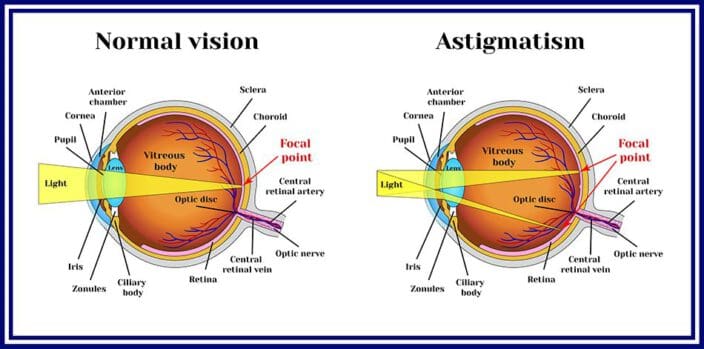Astigmatism Definition, Reason, Symptom, Treatment, Prevention
Astigmatism Definition
Astigmatism is a type of visual impairment characterized by blurred vision from a distance or sometimes at close range and is more sensitive to blinding light at night. This occurs in the cornea of the eye which has an uneven curvature.
Disorders of the eye is also often known to the layman with the term cylindrical eye.
Astigmatism Reason
Astigmatism occurs because the cornea of the eye is not evenly shaped. This causes light that enters the eye to be received by the retina in various places, not focusing on just one point. This is what causes blurred vision.
However, the cause of this uneven corneal curvature is not fully understood. In some people, this has happened since birth. So it is suspected that this disorder is genetic.
Astigmatism Diagnosis
To confirm the presence of astigmatism, an eye examination is required, in the form of:
- Visual
examination In this examination, the doctor will ask the patient to read the letters on a board ( Snellen chart ), from a certain distance (usually about 6 meters). In normal people, the letters can be read correctly. If not all letters are legible, there is a high probability that vision problems will occur.
- Keratometry
This method is used to assess the curvature of the cornea. This examination is important in patients with astigmatism to determine the curvature of glasses or contact lenses which will later be used to treat complaints of blurred vision.
- Refractive examination
After a visual examination, the doctor or optometrist will place a series of lenses alternately in front of the patient’s eyes. The doctor will ask the patient to assess the most suitable lens and most help improve vision optimally.
Astigmatism Symptom
The main symptom of astigmatism is blurred vision to see objects at near and far distances. Those with this disorder also experience less than optimal night vision and are often more blurred.
Other symptoms are similar to the symptoms of myopia (minus eye) and hypermetropia (plus eye), namely tired eyes and headaches.
Astigmatism Treatment
There are several treatment options for astigmatism, namely:
- Glasses
To improve the vision of people with astigmatism, the use of glasses is the most widely chosen method. Glasses must contain cylindrical lenses, can also be added with positive or negative spherical size lenses according to the results of the examination.
- Contact lenses
As an alternative to glasses, contact lenses can also be used. The size and characteristics of the lenses are similar to those used in glasses.
- Surgery
Astigmatism can be treated through surgery to correct the curvature of the cornea. Surgery that can be done is LASIK ( laser in situ keratomileuses) or PRK ( photorefractive keratectomy ).
To determine the most appropriate treatment options, people with astigmatism should consult an ophthalmologist.
Astigmatism Prevention
Unfortunately, until now, nothing can be done to prevent astigmatism. Action that can be taken is to detect astigmatism early. The trick immediately consult a doctor if you feel blurred vision. Eye defects – Hyperopia, Astigmatism, Presbyopia | Don’t Memorise
